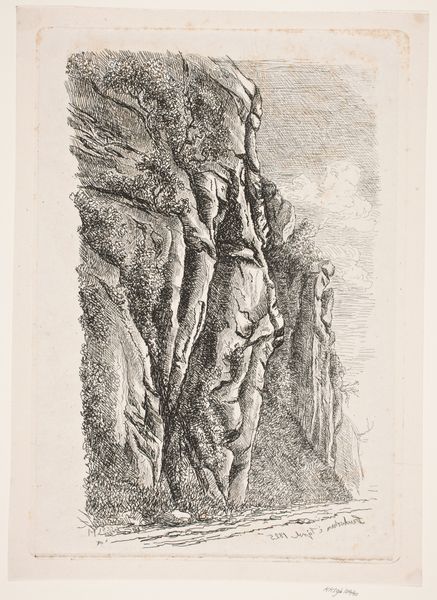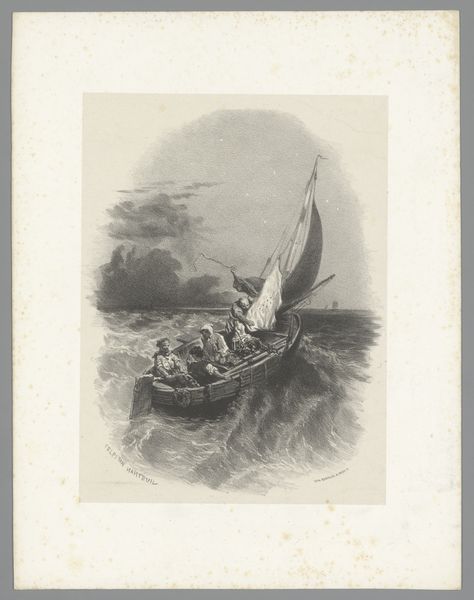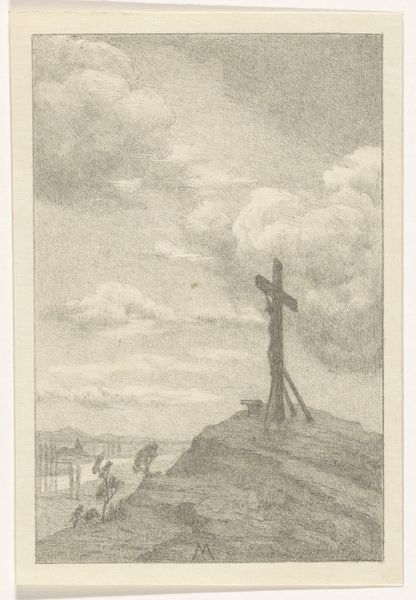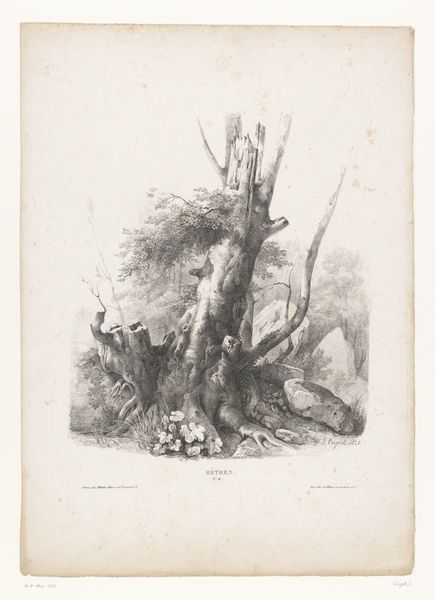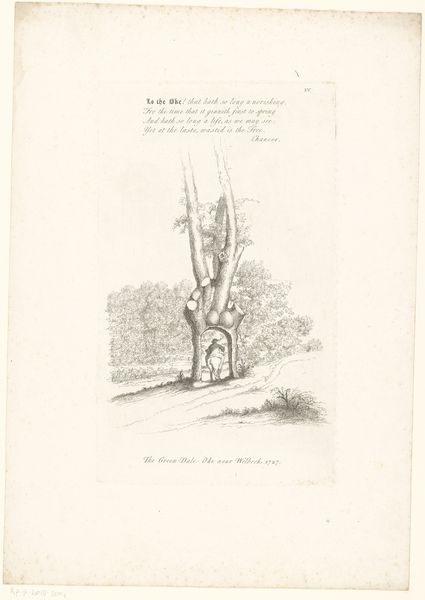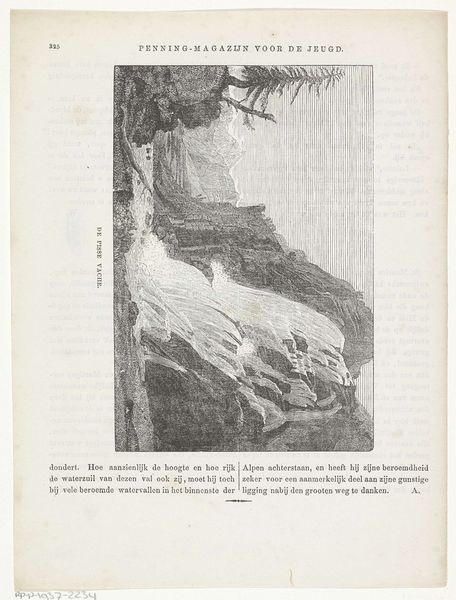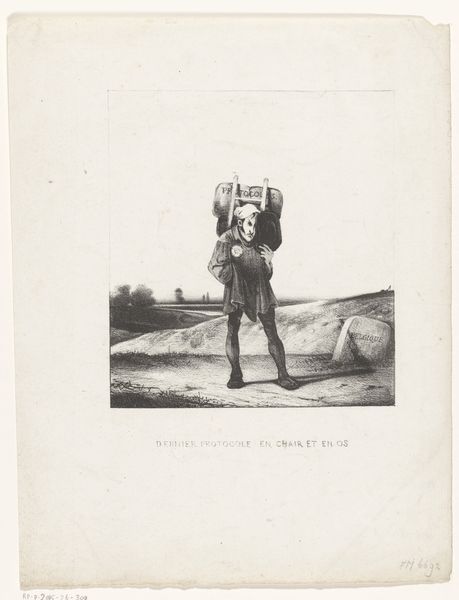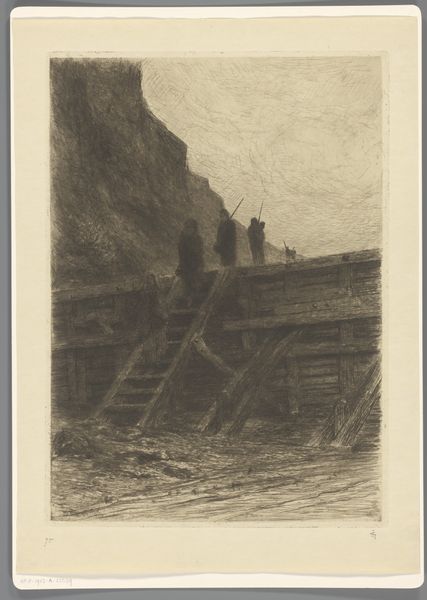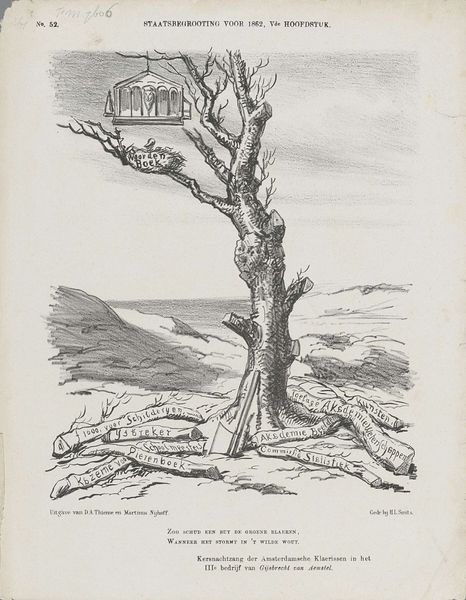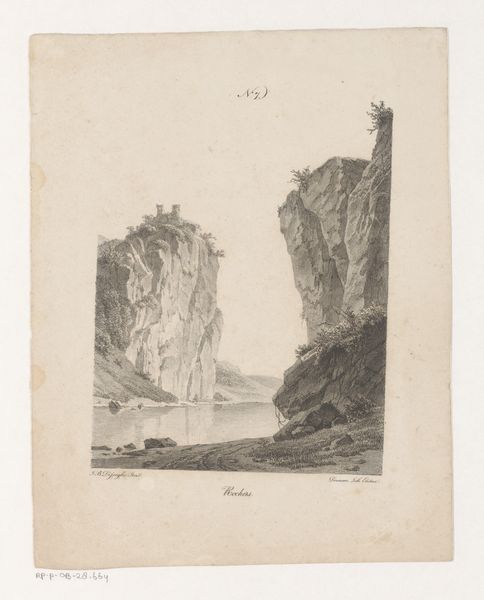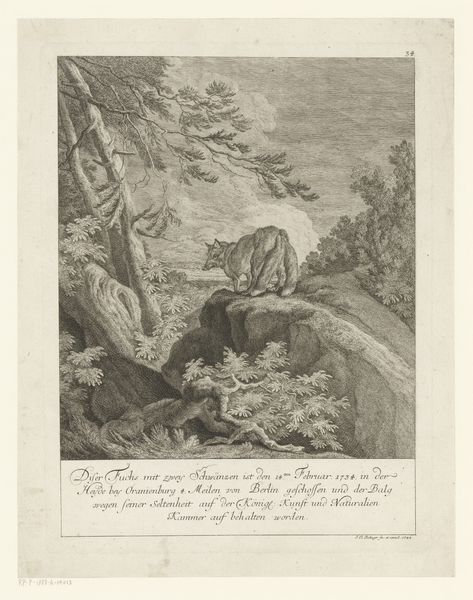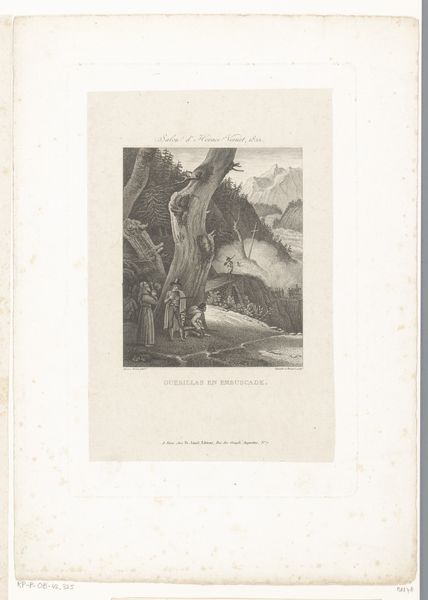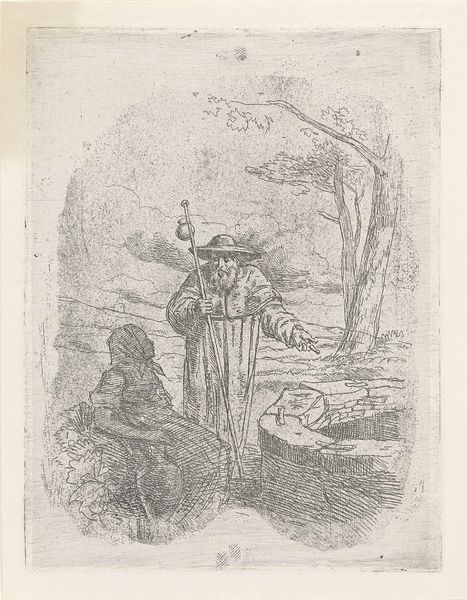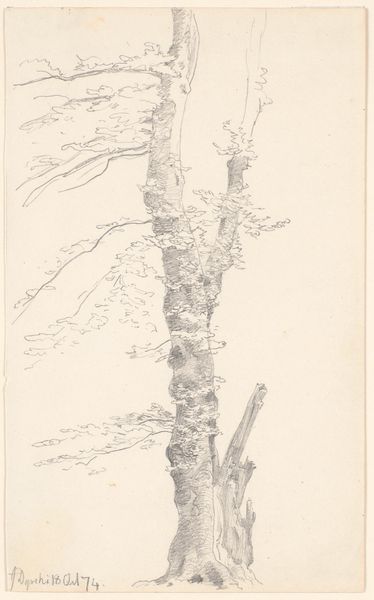
drawing, print, etching, pencil
#
pencil drawn
#
drawing
# print
#
etching
#
pencil sketch
#
landscape
#
ocean
#
pencil drawing
#
romanticism
#
pencil
#
pencil work
Dimensions: height 135 mm, width 87 mm
Copyright: Rijks Museum: Open Domain
Editor: This etching, titled "Pieter Both-Berg op het eiland Mauritius," comes to us from an anonymous artist working sometime between 1822 and 1845. It depicts a rather striking rock formation, almost like a natural skyscraper rising out of the ocean. There's something very serene, but also a bit melancholy, in the landscape. What captures your eye most about this print? Curator: Oh, melancholy is spot on! For me, it's the precariousness of it all. That massive boulder teetering on top of the mountain… it's a whisper of impermanence, isn't it? I'm drawn to how the artist captured this drama with seemingly simple pencil lines and etching techniques. One has to wonder, what drew this artist to such a place, halfway around the world? Was it a fascination with the sublime? Perhaps an escape from something else entirely? What do *you* think is the emotional impact the artist hopes to convey here? Editor: The "escape" reading is interesting... There's a path in the foreground that looks walkable. Do you see it leading somewhere beyond the island? Or is it just leading toward the huge climb upward, where, as you suggest, things look very precarious. Curator: Exactly! That pathway, cleverly placed, invites our eye—our mind—on a journey. A journey not necessarily to a *physical* place, but inward, to contemplation. Don’t you think there is a suggestion to confront our own metaphorical mountains with a certain grace? And, who knows, maybe a touch of awe for the absurd balancing acts that life throws our way. Editor: I see it now. It’s less about the destination, and more about the ascent. The precariousness, as you say, becomes the point. Well, this has been really insightful! I'll never look at landscapes the same way again! Curator: Nor I! Always rewarding to find deeper resonances within a seemingly simple scene, eh?
Comments
No comments
Be the first to comment and join the conversation on the ultimate creative platform.
